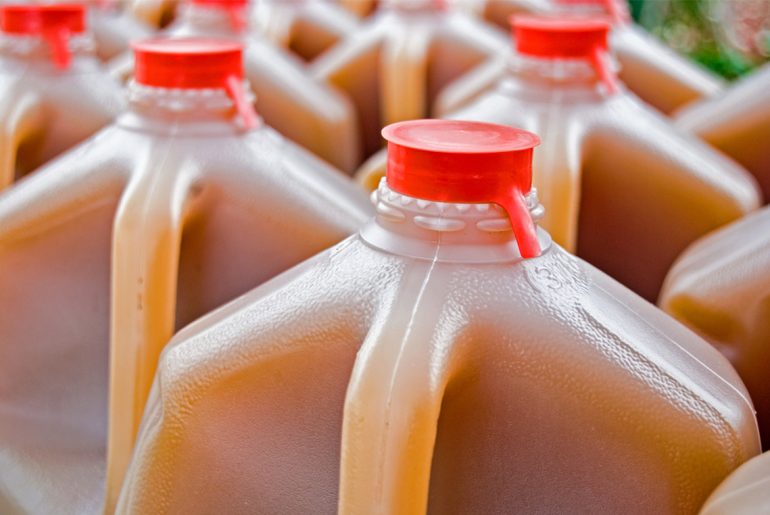Apples are the star fruit of fall: Whether they’re baked in a pie or spiced in a sauce, it’s obvious we love celebrating the return of apple season.
But there’s one way we can consume apples that causes confusion even among the most ardent apple connoisseurs — cider. More specifically, what’s the difference between the stuff we scoop up exclusively during September and October at markets and that other stuff available on the grocery shelf all year long?
This is how you make apple cider:
Here is the difference between apple cider and apple juice:
Apple Cider
Apple cider is made from fresh apples that have been pressed into liquid. To make apple cider, apples are first washed and cut, then ground into a mash that’s about the consistency of apple sauce. The mash is then wrapped in burlap cloth and placed between wooden racks. A hydraulic press squeezes the mash so that every drop of available juice flows into refrigerated tanks. That’s it. Nothing else is done to it. The final product is sold as apple cider.
It takes about 1/3 of a bushel of apples to make one gallon of cider. Apple cider is perishable, so you have to drink it within about a week or so or freeze it for later. Actually, if apple cider sits too long it can become fizzy and slightly alcoholic.
The flavor of cider depends on the blending of juices from different varieties of apples. Most cider makers strive to produce a produce that is the perfect balance of sweet and tart. Still, exact taste from batch to batch and year to year varies.
(See video above on how one old fashioned cider maker presses out cider)
Apple Juice
Apple juice is juice squeezed from apples that also has been filtered to remove solids and seeds. It is always pasteurized, so fermentation is never an issue. Vacuum sealing and extra levels of filtering help extend the product’s shelf life. All of these steps make it so the juice can sit unrefrigerated on your local grocery store shelf year-round.
Apple juice is usually made by larger manufacturers that control the blend of apples to make sure the product is consistent no matter where or when you pick up a bottle.
Also see: Here’s how to go about cooking and canning your own crock pot applesauce.




